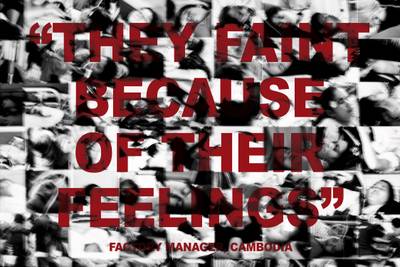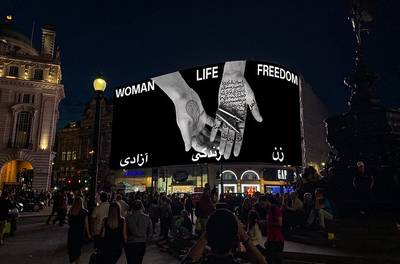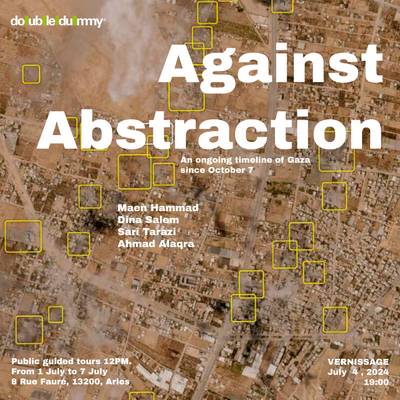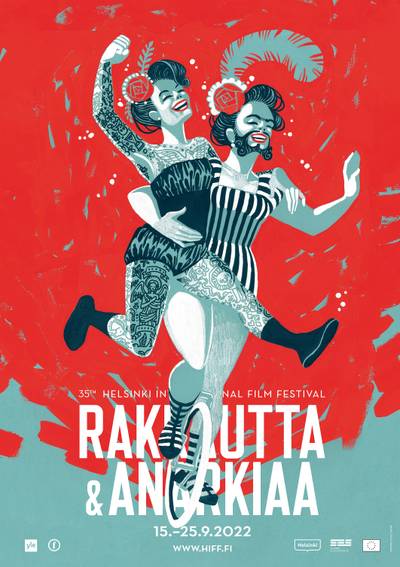

Reviews


If the problems that individuals face in their personal lives are rooted in systemic issues, then it is unrealistic to expect them to find lasting solutions solely through individual self-improvement efforts. Individual change is not simply a matter of personal effort but is also shaped by the broader social conditions that individuals find themselves in. Abril’s work highlights this hypocrisy of the oppressor in a perverted patriarchal society in which women are blamed and ridiculed for showing symptoms of distress—Mass Hysteria.
READOur Bodies Protest on Our Behalf: A Review of ‘Laia Abril – On Mass Hysteria’
Laia Abril’s work On Mass Hysteria at The Festival of Political Photography challenges the focus on individual diagnosis, prompting the question, can photography be a tool for social diagnosis and change?


In his remarkable 2019 debut feature film Soundless Dance, Raveendran narrates the horror of the Vanni genocide (2008-2009) through two physically and politically vastly different places. Thousands of kilometers apart, both lands are bridged by a young refugee who sleepwalks through them, neatly weaving them into a single landscape that is inhabited by a torn, oppressed and uprooted people who are seeking stability, safety and a future across these grounds.
READMourning from a Distance: A Review of Pradeepan Raveendran’s ‘Soundless Dance’
Though ‘Soundless Dance’ is now six years old, it is a film many Eelam Tamil viewers and others remain to date unfortunately unaware of. By inviting us to observe a genocide from outside its centre of violence, the director of the film artfully manages to show viewers the actual reach of weapons and the costs of state crimes to concerned and displaced people.


How will Flow Festival respond to criticisms about its relationships with its free workforce, security contractors, Helsinki Police and its Zionist holding company? Will it align with or distance itself from the actions and affiliations of its financial backers?
READFlow Festival: A Retrospective
Billion-euro changes in Flow Festival’s ownership signal a strong intent to continue commercializing. The Flow Festival, the locals once cherished, has been hollowed out by business interests and now emits the stench of globalist capital.


Close Watch exhibited at the National Finnish Pavilion at Venice Biennale, 2022, is a multimedia installation that, at its core, utilises the artist themself as an embodied intervention within a focused area of artistic research and apparent critique. In the context of this work presented as an exhibition at the national pavilion and its implications of somehow representing Finnish Art, this text seeks to question whether issues pertaining to embodiment and social intervention – and by extension, research conducted and artistic practice developed through it – can ever be free of the power relations implicit in the political, identity-driven understanding of society today.
READWho Watches Whom? Ruminations on Power, Gaze, and Field Through Pilvi Takala’s Close Watch
Ali Akbar Mehta’s review questions whether issues of embodiment and social intervention can ever be free of the power relations in the political, identity-driven understanding of society today.


There is no universal ‘the’ trans body. Where does this article ‘the’ come from and what does it do? To us it seems that to look at something through the lens of ‘the trans body’ is claiming to know something that is situated in some imagined universal trans body – ultimately projecting one’s own body as that universal human in the trans context; the same universal human that the work claims to critically dismantle. White, non-disabled, thin, masculine and middle-class.
READThe Trans Body in Venice: A Critique of Universalising Transness
This review of Teo Ala-Ruona’s ‘Industry Muscle: Five Scores for Architecture’ explores the implications of universalising language, such as ‘the trans body’, in describing marginalised experiences within large-scale, nationalist, and artistic contexts, including the Nordic Countries Pavilion at the Venice Architecture Biennale.


Knowing the genealogy of women’s resistance in Iran since the turn of the century helps us see recent events not as unprecedented ruptures and a sudden awakening of women in an archaic patriarchal society but as the accumulation of multiple resistances throughout our modern and contemporary history in the face of an ever-shape-shifting patriarchy.
READRepresentation of Disobedient Bodies: A Critical Reading of Shirin Neshat’s Visual Language
Comprehending the discrepancy between the representation of the multitude of experiences of people’s protests in Iran, reflected in their own photographic and moving images, and the detached artistic creations of diasporic artists like Neshat.


An activation by Palestinian artists Maen Hammad, Dina Salem, Sari Tarazi, and Ahmad Alaqra was hosted at DoubleDummy, Arles, between July 1-7, 2024, during the opening week of the Rencontres d’Arles. It conveys a timeline of the ongoing genocide in Gaza using information shared via alternative messaging platforms like Telegram.
READRadical Re-imagining of Visual Order Amid the Ongoing Genocide of Palestinians: A Review of ‘Against Abstraction’
An activation by Palestinian artists Maen Hammad, Dina Salem, Sari Tarazi, and Ahmad Alaqra was hosted at DoubleDummy, Arles, between July 1-7, 2024, during the opening week of the Rencontres d’Arles. It conveys a timeline of the ongoing genocide in Gaza using information shared via alternative messaging platforms like Telegram.


The wealthy are equated with such minorities as if being wealthy were a specific cultural phenomenon or even an identity based on a form of discrimination. Veering through notions of whether wealth improves mental well-being or is taboo in Finnish society, Eetu Viren peruses the exhibition’s banality and ridiculousness to expound on questions of wealth and power and why the Finnish National Museum hosted an exhibition that characterizes the wealthy as a “minority group.”
READThe Poor Rich People: A Review of ‘The Philosophy of Wealth’
Eetu Viren on questions of wealth and power and why the Finnish National Museum hosted an exhibition that characterizes the wealthy as a “minority group.”


I could see a lot of love. But I was still trying to find the anarchy that breaks through and what it breaks through. I wondered if I should write about the positionality of the festival in what can be termed as its cultural intervention into events and processes that affect us today.
READFinding Anarchy: A Review of Helsinki International Film Festival
How can organizations dismantle power and operational structures within the world of film festivals to make them speak to the city’s various layers of inhabitants and their lives?